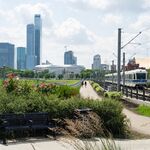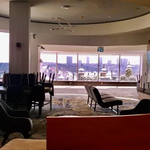i hope their interest has been piqued rather than peaked...

as for the snow melting, i wish it were that simple in our climate.

if you're going to try and melt the snow, there has to be some method and some place for the water to drain. it's pretty easy to add a trench drain at the bottom of a ramp using a snow melt mechanism (usually glycol loops in our climate but sometimes electricity) but relatively flat areas such as sidewalks can be particularly problematic when windrows etc. impede the drainage flow. the same issue will arise in the direction of the sidewalk where any nominal heaving or shifting of slabs will retain that water only to see it freeze into a solid sheet. wind drifts will create a similar problem, particularly once an ice bridge has formed on top of the melted water which happens often and quickly with our prevalent nw winds. at that point, clearing becomes much more difficult because everything is anchored by ice rather than just snow pack.
as for adding those iron filings, they will soon rust and spall the surface of the concrete they're embedded in which is why warehouse slabs now use stainless steel (which is considerably more expensive) or polypropylene fibers now that asbestos can't be used. i would also be interested to know how you would propose to deal with expansion joints and cracks and the inevitable repair and replacement of sections for servicing and new construction etc. without impeding your current flows.
at the end of the day, nothing beats good snow removal well done by hand and/or equipment. it's also much friendlier to chat with your service provider than with a hidden current.




